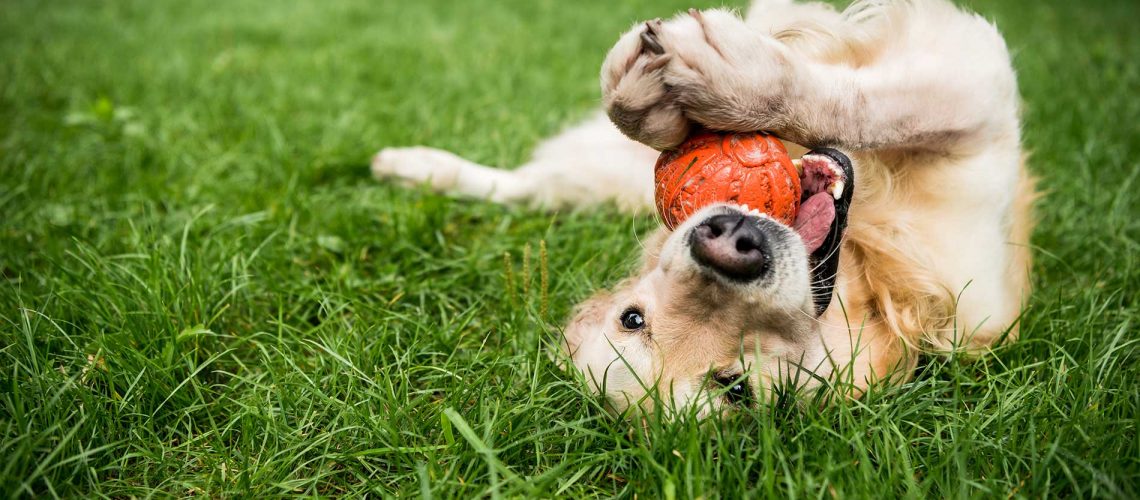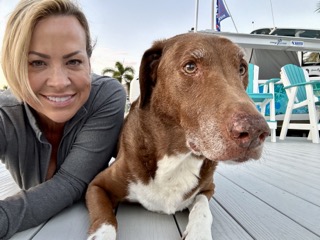As part of Outdoor Play Days at Bark Life, we wanted to give you everything you need to know about getting outside, but most importantly–The Sun. That’s why we’re sharing this important article from our friends at NutriSource. It covers everything you need to know about the “why” when it comes to your pet and the Sun. It also has some important tips that show that humans and pets have a lot more in common than you think when it comes to those warm rays.
Our Pets Love the Sun
Why? Like humans, many animals simply like the soothing feel of the sun on their skin and fur. But there are likely other reasons related to their physiology and their instincts for self-preservation.
Here are some of the most common reasons dogs and cats like to lay and play in the sun.
As a source of body heat
Lying in the sun can help your pet maintain basal body temperature while conserving energy at the same time.
As an antidepressant
Exposure to sunlight can help animals produce serotonin, the natural antidepressant known to generate feelings of well-being in both animals and humans. In humans, the neurotransmitter has been provento help regulate mood and social behavior, appetite and digestion, sleep, memory, and sexual desire and function, but scientists are still learningabout its range of effects on animals. Some experts believe dogs are just as susceptible to Seasonal Affective Disorder (SAD) as humans. “When you don’t get enough light exposure, you could have a grumpy dog, one with a low-grade headache, who is anxious or irritable,” says Hawaii-based veterinarian Dr. Ihor Basko in Whole Dog Journal.
As a source of vitamin D
Unlike humans, dogs and cats can’t metabolize UVB rays directly into vitamin D3. As a rule, they get most of the vitamin D they need from their diets. But the sun does produce sebaceous oil on their coats that can be ingested and turned into the vitamin (which is actually considered a hormone) when they groom themselves.
As a sleep aid
Sunlight can produce the hormone melatonin in both animals and humans, reacting with their retinas and pineal glands to ultimately regulate their sleep cycles and boost the quality of their sleep. To maintain optimal circadian rhythms, some scientists believe it’s important to give your pet access to unfiltered sunlight throughout the daylight hours.
To build their immune systems
In the Whole Dog Journal article, California-based veterinarian Dr. Stephen Blake points to research showing that sunlight can lower human susceptibility to colds and viruses, and says the same principle may apply to dogs. “Lack of sunlight doesn’t often cause acute disease, but it can cause chronic disease,” he notes. “It’s usually a gradual process. It’s like not getting enough calcium — you’ll see the results of that deficiency over time.”
As pain relief
In older dogs and cats, the warmth generated by the sun may offer temporary relief from arthritis, rheumatism and other afflictions. It can also kill off germs. “Sunshine can kill the extraneous yeast and bacteria that can grow in wounds,” notes Basko. “Anaerobic bacteria like the dark and damp, and sunlight helps dry out wounds and helps kill microscopic fungi.” Those factors explain why some veterinarians employ full-spectrum lighting in their recovery rooms.
In general, veterinarians recommend that your pets get a minimum of 20 to 40 minutes of direct outdoor sunlight daily. Light filtered through glass windows may feel good to your dog or cat, but it lacks ultraviolet rays and as such won’t impart the same health benefits. To counter that, some pet owners strategically install fluorescent or incandescent bulbs that can provide full-spectrum lighting indoors, choosing lamps near their pet’s food bowl or bed, then turning off the lights at bedtime.
How much sun is too much sun? A few precautions
While animals do seem to enjoy the sun, it’s important to note they can be susceptible to the same sun-related health issues as humans. While much of their body surface is protected by their fur, they can still experience problems if they’re overexposed to heat and sunlight – especially if they have short hair or if they’re prone to breathing issues.
Consider the following potential issues as your fur baby soaks up the rays.
Dehydration
If your pet lacks access to water so he can replace fluids, he may start to dehydrate. Symptoms can include sunken eyes, sticky gums, lethargy and/or weakness. If sections of his skin stay upright when gently pinched, he may have a problem. Avoid that situation by carrying bottled water and a foldable bowl wherever you go and ensuring your pet can drink at will, at home or on the go.
Heatstroke
Too much time in intense sun without relief and/or water could cause your pet’s organs to start shutting down and could even lead to death. Early signs of heatstroke include excessive panting and an aversion to walking; worse cases may lead to weakness, collapse, loss of consciousness, vomiting/diarrhea, seizures and/or gums that are tinged red, blue or gray. To prevent heatstroke on extra-hot days, you may wish to limit your pet’s time in the sun, avoid walks and/or exercise during the most scorching hours or outfit your pet in a protective cooling vest that contains a liquid coolant. Note that brachycephalic breeds such as bulldogs should never spend too much time in the sun because they have trouble dissipating heat through panting.
Sunburn
Despite their fur, it’s possible for your pet to become burned if he spends too much time in direct sunlight during hours of peak intensity (typically 10 a.m. to 4 p.m.), or if he’s out and about in a high-altitude area. And yes, it’s possible for your pet to get skin cancer, with lesions most commonly appearing on or near the eyelids, ears and nose.
The most susceptible breeds are those with white or light coloring and/or sparse hair. Canines often get burned under their bellies or on top of their muzzles, while felines are most apt to burn on their faces or the top of their ears. If you suspect your dog could be subject to too much sun exposure, you may wish to outfit him in UV-protective clothes or apply canine-safe sunscreen. Seek a brand that offers broad-spectrum (UVA/UVB minimum SPF30) protection but is safe if ingested, since your dog will likely lick some off. Stay away from products that contain toxic zinc oxide, PABA or octyl salicylate. Another option? Dog-tailored sunglasses to protect his eyes.
If you’re concerned about your indoor cats, you may wish to strategically add UV-blocking film to your sunniest windows and doors. At present, there is no FDA-approved sunblock for cats.
As you balance your pet’s love of the sun with precautions regarding his health and safety, consider whether you’re providing the diet that best bolsters his immune system.


